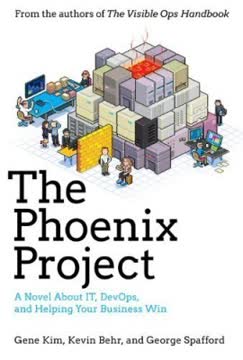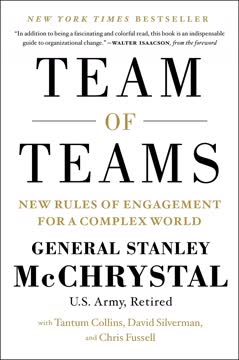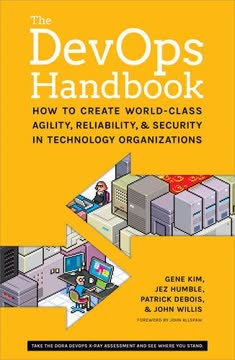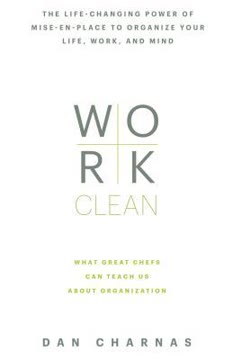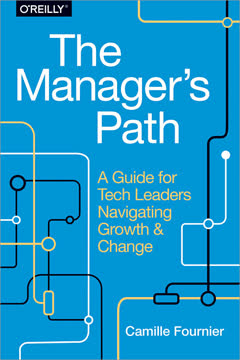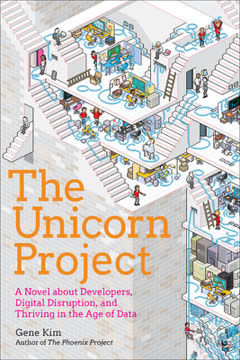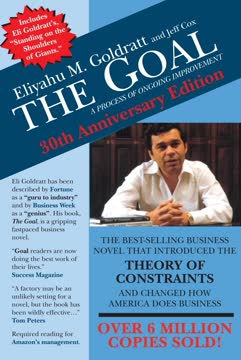نکات کلیدی
1. چالشهای مدیریت پروژه: تأخیرها، هزینههای اضافی و مصالحه در محدوده
"تقریباً هیچ پروژهای به موقع یا با بودجهی تعیینشده به پایان نمیرسد. و اگر هم به پایان برسد، به این دلیل است که محدودهی اصلی آن به خطر افتاده است."
علل اصلی شکست پروژهها. مدیریت پروژهی سنتی اغلب به دلیل سه عامل اصلی ناکام میماند:
- زمان ایمنی بیش از حد در تخمینهای وظایف فردی
- سندروم دانشجویی: به تعویق انداختن کار تا آخرین لحظه
- قانون پارکینسون: گسترش کار برای پر کردن زمان تخصیصیافته
پیامدهای مدیریت ضعیف پروژه:
- از دست رفتن مهلتها و فرصتهای بازار
- هزینههای اضافی و کاهش سودآوری
- کیفیت یا ویژگیهای محصول به خطر افتاده
- کاهش رضایت و وفاداری مشتری
2. زنجیرهی بحرانی: بازتعریف محدودیتها و اولویتهای پروژه
"زنجیرهی بحرانی طولانیترین زنجیرهی مراحل وابسته است، طولانیترین در زمان."
تغییر تمرکز از مسیر بحرانی به زنجیرهی بحرانی. رویکرد زنجیرهی بحرانی هم وابستگیهای وظایف و هم محدودیتهای منابع را در نظر میگیرد و یک جدول زمانی واقعیتر برای پروژه ارائه میدهد:
- شناسایی گلوگاه واقعی پروژه
- در نظر گرفتن تداخل منابع در پروژههای متعدد
- اولویتبندی وظایفی که به طور مستقیم بر تکمیل پروژه تأثیر میگذارند
اجرای روش زنجیرهی بحرانی:
- حذف ایمنی پنهان از تخمینهای وظایف فردی
- تجمیع زمان ایمنی در بافرهای پروژه و تغذیه
- تمرکز بر مدیریت بافرها به جای مهلتهای وظایف فردی
3. مدیریت بافر: حفاظت مؤثر از جدول زمانی پروژه
"ما تمام ایمنی را در انتهای مسیر بحرانی قرار میدهیم. حذف تخمینهای زمانی هر مرحله زمان کافی برای ایجاد یک 'بافر پروژه' آزاد میکند."
انواع بافرها در مدیریت پروژه زنجیرهی بحرانی:
- بافر پروژه: حفاظت از تاریخ تکمیل کلی پروژه
- بافر تغذیه: حفاظت از زنجیرهی بحرانی در برابر تأخیرهای مسیرهای غیر بحرانی
- بافر منابع: اطمینان از دسترسی منابع بحرانی در زمان نیاز
استراتژیهای مؤثر مدیریت بافر:
- نظارت بر نرخ مصرف بافر
- اولویتبندی وظایف بر اساس نفوذ بافر
- اقدام اصلاحی زمانی که بافرها به طور قابل توجهی مصرف میشوند
4. چندوظیفهای: قاتل پنهان بهرهوری در اجرای پروژه
"چندوظیفهای احتمالاً بزرگترین قاتل زمان پیشرو است."
تأثیرات منفی چندوظیفهای:
- افزایش زمان تنظیم و تغییر زمینه
- کاهش تمرکز و کیفیت کار
- افزایش زمان پیشرو پروژه
استراتژیها برای کاهش چندوظیفهای:
- اولویتبندی وظایف بر اساس زنجیرهی بحرانی
- اجرای محدودیت "کار در حال انجام" برای افراد و تیمها
- تشویق به تکمیل وظایف قبل از شروع کار جدید
5. مذاکرات با فروشندگان: تعادل بین زمان پیشرو و ملاحظات هزینه
"ما باید تأثیر مالی یک تأخیر را درک کنیم. باید بفهمیم که یک تأخیر سه ماهه گاهی اوقات بیشتر از دادن ده درصد اضافی به همه فروشندگان ما هزینه دارد."
بازنگری در روابط با فروشندگان:
- تمرکز بر تأثیر کلی پروژه به جای هزینههای اجزای فردی
- مذاکره برای زمانهای پیشرو کوتاهتر، حتی با قیمتهای بالاتر
- اجرای سیستمهای اطلاعرسانی زودهنگام برای تأخیرهای احتمالی
استراتژیهای مدیریت مؤثر فروشندگان:
- ارتباط واضح اولویتها و جدول زمانی پروژه
- ارائه مشوقها برای تحویل زودهنگام یا جریمهها برای تأخیرها
- ایجاد شراکتهای بلندمدت بر اساس قابلیت اطمینان و پاسخگویی
6. محدودیتهای سازمانی: شناسایی و رفع گلوگاهها
"گلوگاه منبعی است که ظرفیت آن برای تولید مقادیر مورد نیاز بازار کافی نیست. به این ترتیب گلوگاه مانع از کسب درآمد بیشتر شرکت میشود."
شناسایی محدودیتهای سازمانی:
- تحلیل استفاده از منابع در پروژهها
- جستجوی بخشهایی که به طور مداوم تأخیر دارند یا بارگذاری شدهاند
- بررسی شکایات مشتریان و فرصتهای از دست رفته
رفع گلوگاهها:
- افزایش ظرفیت در گلوگاه
- کاهش کارهای غیرضروری از گلوگاه
- اجرای مدیریت بافر برای حفاظت از گلوگاه
7. شکاف دانشگاه و صنعت: پل زدن بین نظریه و کاربرد عملی
"ما فرضیات زیادی کردهایم. و برای کارکردن آن، برنامه ما باید خاص باشد. اگر به انجام آنچه که انجام دادهایم ادامه دهیم، که همان کاری است که همه انجام میدهند، به نتایج نامطلوب مشابهی خواهیم رسید."
چالشهای آموزش مدیریت پروژه در دانشگاه:
- مدلهای نظری اغلب پیچیدگیهای دنیای واقعی را در نظر نمیگیرند
- تمرکز بر تکنیکهای بهینهسازی به جای روشهای عملی
- عدم تأکید بر مهارتهای نرم و رهبری در اجرای پروژه
بهبود آموزش مدیریت پروژه:
- گنجاندن مطالعات موردی و پروژههای دنیای واقعی
- تأکید بر تفکر انتقادی و مهارتهای حل مسئله
- تقویت همکاری بین دانشگاه و صنعت
8. بهبود مستمر: تطبیق روشهای مدیریت پروژه
"باید راهی برای اصلاح آن وجود داشته باشد. ما باید."
اهمیت بهبود مستمر:
- ارزیابی منظم شیوههای مدیریت پروژه
- تشویق بازخورد از اعضای تیم و ذینفعان
- آگاهی از روشها و ابزارهای جدید
اجرای فرهنگ بهبود مستمر:
- برگزاری جلسات مرور پس از پروژه و درسهای آموخته شده
- آزمایش تکنیکهای جدید در پروژههای کوچکتر
- ایجاد محیطی یادگیری که به نوآوری و تطبیق ارزش میدهد
9. تخصیص منابع: بهینهسازی برای موفقیت پروژه
"وابستگی بین مراحل میتواند نتیجهی یک مسیر یا نتیجهی یک منبع مشترک باشد. چرا ما از این که هر دو وابستگی در تعیین طولانیترین زنجیرهی مراحل وابسته دخیل هستند، شگفتزده میشویم؟"
استراتژیهای مؤثر تخصیص منابع:
- در نظر گرفتن هم وابستگیهای وظایف و هم محدودیتهای منابع
- اولویتبندی منابع بر اساس زنجیرهی بحرانی
- اجرای بافرهای منابع برای اطمینان از دسترسی
چالشهای مدیریت منابع:
- تعادل استفاده از منابع در پروژههای متعدد
- رفع شکافهای مهارتی و نیازهای آموزشی
- مدیریت تعارضات و اولویتهای منابع
10. رهبری در مدیریت پروژه: تمرکز بر زنجیرهی بحرانی
"تمرکز مهم است، اما چیزهای دیگری نیز وجود دارند که به همان اندازه مهم هستند."
مهارتهای کلیدی رهبری برای مدیران پروژه:
- توانایی شناسایی و ارتباط اولویتهای پروژه
- مهارت در مدیریت انتظارات ذینفعان
- توانایی تصمیمگیری بر اساس دادههای مدیریت بافر
تقویت فرهنگ زنجیرهی بحرانی:
- آموزش اعضای تیم در اصول زنجیرهی بحرانی
- تشویق به ارتباط باز دربارهی پیشرفت وظایف و تأخیرهای احتمالی
- جشن گرفتن موفقیتها در مدیریت بافر و تحویل پروژه
آخرین بهروزرسانی::
FAQ
What's Critical Chain by Eliyahu M. Goldratt about?
- Focus on Project Management: The book applies the Theory of Constraints (TOC) to project management, emphasizing effective management of timelines and resources to prevent delays and cost overruns.
- Narrative Style: It uses a fictional narrative to present complex concepts, making them more relatable and easier to understand through storytelling.
- Key Concepts: Introduces the critical chain method, which prioritizes resource allocation and scheduling, and discusses the impact of safety time on project efficiency.
Why should I read Critical Chain by Eliyahu M. Goldratt?
- Practical Insights: Offers valuable insights into improving project management practices, challenging conventional wisdom and encouraging a new approach.
- Real-World Applications: Concepts are applicable to real-world scenarios, helping implement TOC in organizations for better project delivery.
- Engaging Learning Experience: Combines storytelling with educational content, making it an enjoyable and informative read.
What are the key takeaways of Critical Chain by Eliyahu M. Goldratt?
- Importance of Focus: Emphasizes focusing on the critical path and managing constraints to ensure projects are completed on time and within budget.
- Safety Time Management: Highlights the need to manage safety time wisely to avoid inefficiencies and streamline project timelines.
- Collaboration and Communication: Stresses the importance of effective communication and collaboration among team members for project success.
What is the Theory of Constraints (TOC) in Critical Chain by Eliyahu M. Goldratt?
- Core Principle: TOC focuses on identifying and managing constraints that limit an organization's performance, aiming for overall efficiency improvement.
- Five Focusing Steps: Involves identifying, exploiting, subordinating, elevating the constraint, and repeating the process for continuous improvement.
- Application in Projects: Helps teams prioritize tasks and allocate resources effectively to meet deadlines and achieve project goals.
How does Critical Chain by Eliyahu M. Goldratt differ from traditional project management methods?
- Focus on Constraints: Shifts focus from detailed planning to managing constraints and resource allocation for efficient project execution.
- Dynamic Scheduling: Advocates for flexible scheduling that adapts to changes and uncertainties, unlike rigid traditional plans.
- Reduced Safety Time: Encourages minimizing excessive safety time to create more accurate project timelines and reduce inefficiencies.
What is the critical chain method introduced in Critical Chain by Eliyahu M. Goldratt?
- Resource Allocation Focus: Prioritizes resource allocation and scheduling based on project constraints to optimize resource use and minimize delays.
- Buffer Management: Incorporates strategic time buffers to protect the project schedule from uncertainties, ensuring critical tasks are completed on time.
- Emphasis on Collaboration: Encourages team collaboration to address constraints and improve project outcomes through a team-oriented approach.
How does Critical Chain by Eliyahu M. Goldratt address the issue of project delays?
- Identifying Constraints: Emphasizes identifying and managing constraints that lead to delays, developing strategies to mitigate their impact.
- Dynamic Adjustments: Advocates for real-time adjustments to project plans based on feedback, allowing teams to respond to challenges effectively.
- Continuous Improvement: Promotes learning from past experiences to refine processes and reduce future delays.
What role does safety time play in Critical Chain by Eliyahu M. Goldratt?
- Excessive Padding: Warns against excessive safety time padding, which can lead to inefficiencies, and encourages critical assessment of its necessity.
- Impact on Timelines: Proper management of safety time can significantly impact project timelines, leading to more accurate schedules.
- Balancing Act: Highlights the need for a balance between safety time and realistic estimates to maintain project momentum and timely delivery.
How can I apply the concepts from Critical Chain by Eliyahu M. Goldratt in my organization?
- Assess Current Practices: Evaluate current project management practices to identify areas for improvement and constraints hindering performance.
- Implement TOC Principles: Focus on identifying and managing constraints using TOC's five focusing steps to guide improvement efforts.
- Encourage Collaboration: Foster a culture of collaboration and open communication to address challenges and improve project outcomes.
What are the implications of Critical Chain by Eliyahu M. Goldratt for future project management practices?
- Shift in Mindset: Encourages a shift from traditional practices to a dynamic, constraint-focused approach for more efficient execution.
- Integration of TOC: As TOC principles are adopted, project management practices will evolve, enhancing overall performance and success rates.
- Focus on Continuous Improvement: Emphasizes learning from past experiences, equipping organizations to navigate challenges and achieve goals.
What are the best quotes from Critical Chain by Eliyahu M. Goldratt and what do they mean?
- "The question is not ‘are we going to miss?' The question is ‘when are we going to miss?'": Highlights the inevitability of challenges and the need to address constraints proactively.
- "If we don't launch the new modem, our competitors will.": Emphasizes the urgency of timely product development to maintain market competitiveness.
- "Your mission is to find a way that will enable us to drastically cut our development time.": Underscores the book's central theme of efficiency and speed in project management.
How does Critical Chain by Eliyahu M. Goldratt address resource contention?
- Identifying Resource Contention: Stresses the importance of identifying resource contention as a key factor in project delays.
- Scheduling Adjustments: Suggests rescheduling tasks or reallocating resources to prevent conflicts and ensure smooth project progression.
- Using Buffers: Advocates for strategic buffer placement to absorb the impact of resource contention and keep projects on track.
نقد و بررسی
این کتاب با عنوان زنجیرهی بحرانی یک رمان تجاری است که نظریهی محدودیتها را به مدیریت پروژهها اعمال میکند. خوانندگان از شیوهی داستانگویی گلدرت قدردانی میکنند که مفاهیم پیچیده را قابل فهم میسازد. این کتاب به معرفی مدیریت پروژه بر اساس زنجیرهی بحرانی میپردازد و بر شناسایی و مدیریت محدودیتها، استفاده از بافرها و اجتناب از دامهای رایج مانند «سندرم دانشآموز» تمرکز دارد. در حالی که برخی از خوانندگان داستانهای شخصی را ضعیف میدانند، بسیاری از بینشهای کتاب در زمینهی بهبود تحویل پروژهها را ستایش میکنند. با این حال، برخی از خوانندگان اشاره میکنند که مدیریت پروژه از زمان انتشار این کتاب در سال 1376 تکامل یافته است که ممکن است به محدودیتهایی در ارتباط آن با شیوههای مدرن منجر شود.
Similar Books

